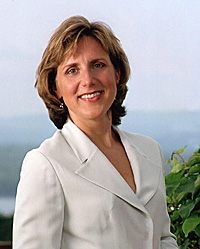Dorothy, we’re not in Kansas anymore — but let me back up.
Maybe I should start by telling you that the title of the second song is “Un Madre Comió Asado,”— “A mother roasted her child,” and is a traditional Sephardic song after “The Lamentations of Jeremiah.”
Now have I got your interest? Good. I’ll start from the beginning.
Ayre, pronounced Ah-YEE-rei and meaning “air” and “melody” in medieval Spanish, is a 40-minute cycle of 11 songs drawn primarily from a large body of 15th-century Spanish folk songs. Soprano Dawn Upshaw will present this work, written by Argentine-born, Jewish-American composer Osvaldo Golijov, at Benaroya Hall on February 29. She will be accompanied by a group called the Orquesta Los Pelegrinos.
I got a real kick when I learned about with which instruments the piece has been scored: flute, clarinet, horn, viola, cello, bass, harp, hyper-accordion (a stereo-amplified accordion), guitar/ronroco (a Bolivian lute), percussion and laptop. Yes, laptop — but more on that later.
The poetry for the songs is diverse. A few examples include a lullaby based on Sephardic street calls, the quote from Jeremiah’s Lamentations (as mentioned above), a Sardinian poem and a Christian-Arab Easter song. Taken as a whole, the cycle represents the three prominent cultures in 15th-century Spain, before the expulsion of the Jews in the latter part of the century. The varying degrees of coexistence and conflict between these diverse cultures interested the composer very much and had an influence in the creation of Ayre.
“With a little bend, the melody goes from Jewish to Arab to Christian, and how connected these cultures are and how terrible it is when they don’t understand each other,” Golijov said recently in an interview with NPR. “The grief we are living in the world today already happened for centuries, but also shows that harmony between civilizations was possible.”
The music is a lush mix of Spanish and Mediterranean influences, reflecting a range of human conditions and emotions that stem from the interactions of the cultures. Tales of love and war, religion and rage are sung in Ladino, Arabic, Hebrew, Sardinian, Spanish and Aramaic.
The style, as you might guess from the listed instruments, is eclectic and intriguing. The very first song in the cycle, titled “Mañanita de San Juan” (“Dawn, St. John’s Day”) is described as a traditional Sephardic romance. The music is evocative of a different world: a world of shouks, veiled women, steam rising from samovars, the sound of morning prayers broadcast from the top of the minarets.
Then the second song, the infamous “mother-roasting-child” piece, suddenly begins. Though different, it seems to flow from the hectic river into a pool of tranquility. Then, once again, we’re taken back out to the street, where we hear ethnic percussion and accordion in a song called “Tancas serradas a muru” (“Walls are encircling the land”). It’s hard to believe this is the same voice as the previous two pieces. And thus the journey continues — emotional, raw, and tumultuous.
In a few of the pieces, for example, one called “Wa Habibi,” Golijov enlists the work of a sound designer on a laptop to incorporate synthesized sound. There are lots more surprises in the cycle, so I’ll stop here so you can experience the work for yourself.
For those of us familiar with Dawn Upshaw, we usually associate her with a pure and beautiful tone. Early in her career, Upshaw was known for singing lighter opera roles and being an intimate and supremely musical interpreter of art songs. Her work was not typically thought of as gut-wrenching, Wagnerian soprano. However, Golijov recognized the potential in her voice.
From the very first notes of the first song, he pushes her to the edges of her vocal range. It is clear that Upshaw has the confidence and ability to take the work all the way there, completely away from her classically-trained soprano, to vocally express the rawness and ethnic/cultural sounds required by the style of the music.
In the same NPR interview, Golijov said that he knows “that she loves to go well beyond what people ask from her, usually which is sort of a virginal, angelical quality. I feel like, as she matures, there is an incredibly sensual and dark low octave that she has developed.”
Ms. Upshaw agrees.
“It’s a great thing to have the opportunity to take risks, [to] try to break the boundaries, to step outside of the world I usually live in,” she says.
Hoo-boy, does she ever get to!
Coming up for Ayre
